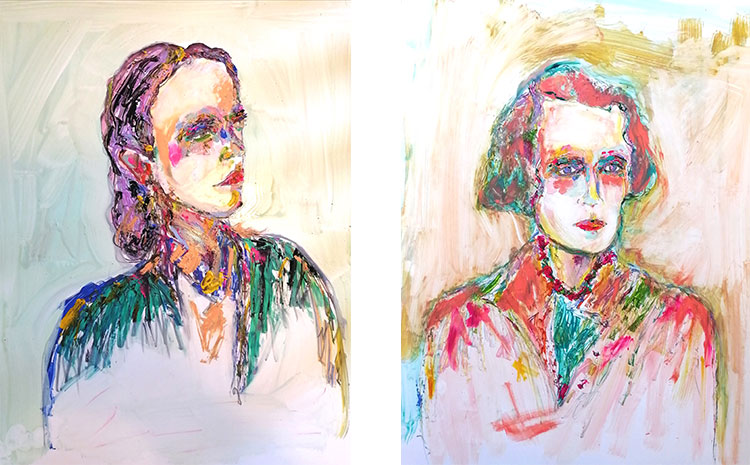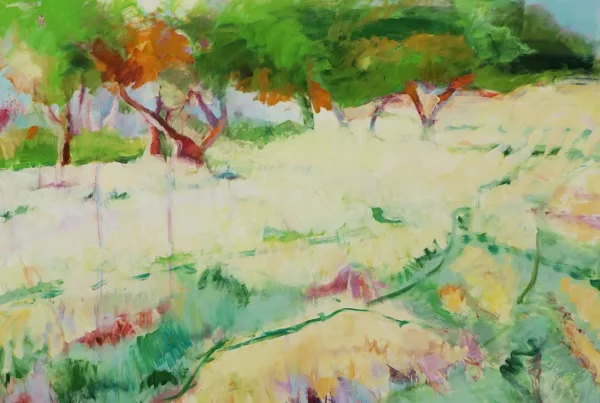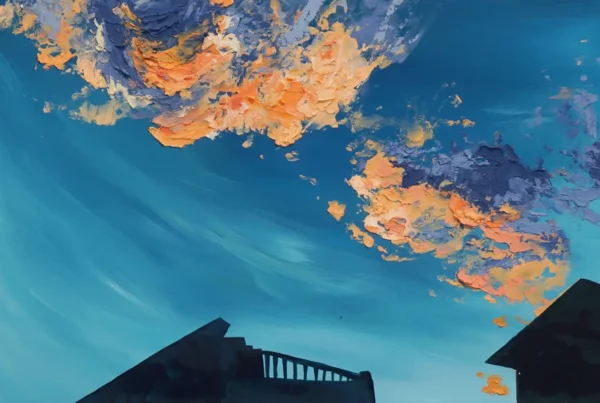“I create faces, people. I do not consider myself a portrait artist, but rather a painter of people.”
A Journey of Healing and Artistic Rediscovery
Introducing Drea Cohane, an emerging artist who discovered her passion for art in an unexpected manner. Throughout her childhood, she was exposed to artistic influences, primarily through her father, who was also an artist. Although the seeds of creativity were planted early in her life, she initially pursued other vocations and placed her artistic inclinations on hold.
However, a pivotal moment occurred seven years ago when Cohane experienced a traumatic brain injury (TBI). With the latest neurologist she consulted as her guide, she began practicing drawing in order to foster the growth of new neural pathways and enhance her brain’s plasticity. Despite her initial struggles, she found that learning this new skill helped alleviate some of her symptoms. The process of creating art with a compromised brain presented unique challenges, which influenced the direction of her work.
Cohane’s experience with chronic health issues led to feelings of isolation, which in turn, inspired her to depict human subjects in her art rather than landscapes or abstract compositions. This choice stemmed from her desire to engage with the internal narratives that arise when one is isolated. The presence of these narratives provided her with a sense of solace and companionship, particularly when surrounded by her creations in her studio.
Driven by a desire to heal her brain and embrace her dormant creativity, Cohane began producing art daily. She found inspiration in a quote by poet Mary Oliver, which encouraged her to explore her creative potential without hesitation or regret. In order to maintain accountability, she created an Instagram profile to document her artistic journey. A few months into this practice, her artwork began garnering interest, and she soon found herself selling her creations.
Today, Drea Cohane works as a full-time artist in her studio, transforming her initial pursuit of healing into a lifelong artistic endeavor. Reflecting on her journey, she expresses gratitude for her brain injury, acknowledging that it ultimately guided her to the fulfilling and rewarding path she now follows.
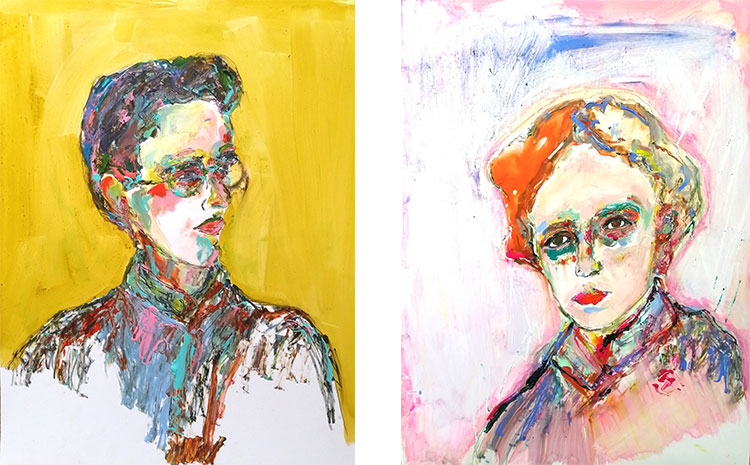
Beyond Traditional Portraiture: Capturing Inner Narratives
Drea Cohane specializes in creating depictions of faces and individuals, distinguishing her work from that of traditional portrait artists. Rather than focusing on replicating physical appearances, Cohane seeks to capture the essence and inner narrative of her subjects, exploring how facial features convey a unique story.
Despite lacking formal training in fine art, Cohane’s innate talent for drawing has enabled her to develop a distinct style, which her cousin Neill, a fellow artist based in the UK, identifies as expressionist. Her background in psychology has greatly influenced her artistic approach, as she is particularly fascinated by how people’s facial features and microexpressions inadvertently reveal their inner emotions, even when they attempt to conceal them.
Reflecting on her artistic journey, Cohane recalls an early series she created featuring portraits of female writers. Recognizing that these initial works did not meet her current standards, she expresses a desire to revisit the project in the future, applying her evolved skills and understanding of the human experience to capture the essence of these influential women more effectively.
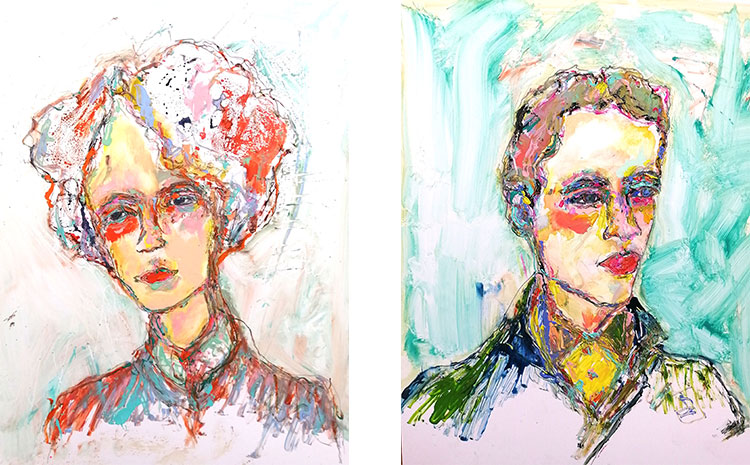
The Evolving Creative Process and Cohane’s Pivotal Artwork
Drea Cohane’s creative process is an ongoing journey that draws inspiration from various sources, ranging from passing strangers on the street to images that appear in her newsfeed. The faces of those in her personal life also make subtle appearances in her artwork. Upon entering her studio each morning, Cohane envisions the face she wants to create, along with the mood she wishes to convey. While her plans do not always unfold as expected, the final result often resembles the initial vision she had when approaching her desk.
Due to a neurological condition, Cohane’s eyes struggle to maintain focus for more than a few minutes before her vision begins to blur. Consequently, the drawing stage of her work is executed swiftly, with the quality of the drawing varying based on how she feels on a given day. Once the drawing is complete, Cohane transitions to the painting stage, which she greatly enjoys. This part of the process allows her to soften her focus and take her time applying the paint. Although she does not predetermine a color palette, her favorite colors frequently make their way into her artwork.
Six months into her daily art practice, Cohane created a piece featuring a woman with windswept black hair, dressed in red against a teal background. This work marked a turning point for her, as it was the first time she felt truly satisfied with her creation. The piece not only gave her hope in her development as an artist but also became one of the first to be purchased by a collector. This pivotal work solidified Cohane’s status as an artist and set the stage for her future endeavors.
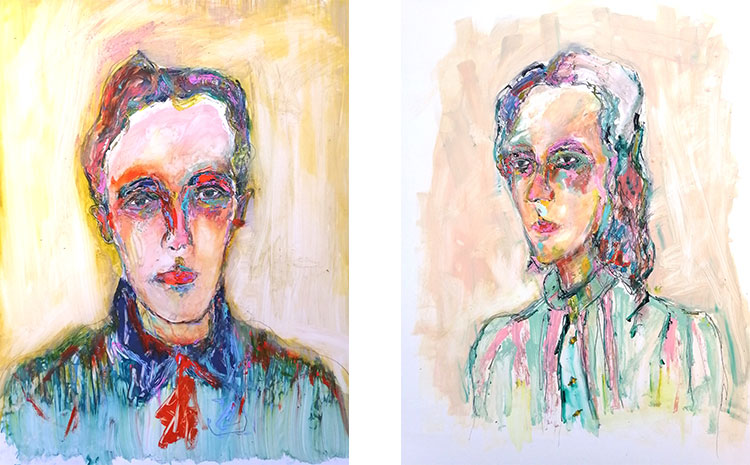
Embracing Chaos: Cohane’s Studio and Advice for Aspiring Artists
Drea Cohane thrives in a working environment that embodies chaos and artistic freedom. According to her husband, Simon, her studio often succumbs to complete and utter madness. While Cohane appreciates the concept of maintaining an orderly workspace, she admits to reveling in the disorderliness of her creative space. In this environment, paint tubes and smeared paint abound, and numerous cups of water and tea populate her workspace, creating a delicate balancing act as she paints.
Cohane believes that this chaotic atmosphere enables her to let go as an artist, allowing for uninhibited creativity. She experiences a profound sense of liberation within her studio, as concerns and anxieties of daily life dissipate upon entering this haven of artistic expression.
For aspiring artists embarking on their creative journeys, Cohane emphasizes the importance of focusing on one’s own artistic vision, rather than adhering to the dictates of the art industry. She warns that the industry often thrives on ego and hype, leading to an overabundance of similar art. Cohane also underscores the value of cultivating relationships with fellow artists, whether in person or through social media. Establishing a supportive network can be invaluable for those taking their initial steps in the art world.
